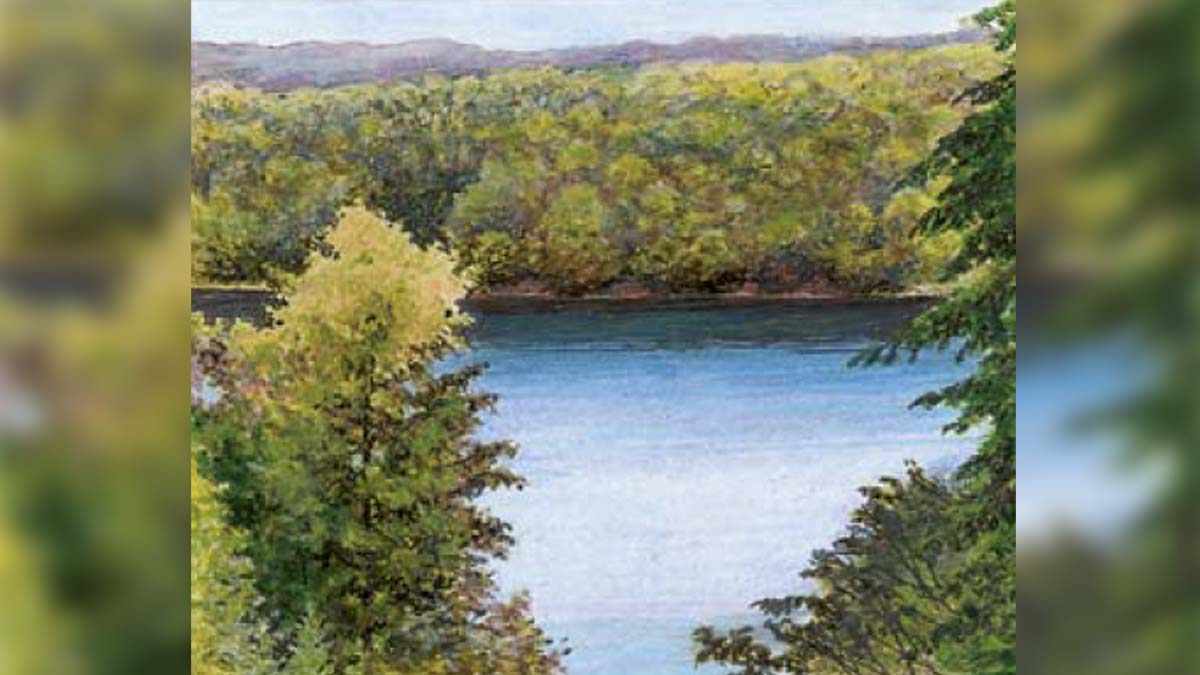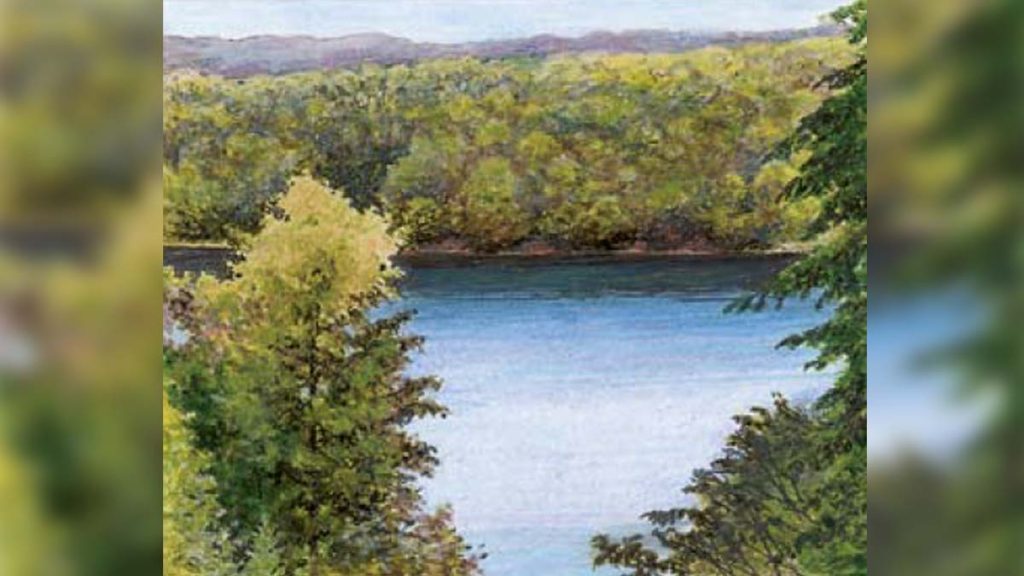Slåensø
At the eastern end of the 5 km long Silkeborg Sønderskov lies Slåensø with the much larger Borre Sø immediately north of it. Slåensø is surrounded by hills and several places in the lake the depth reaches 12 metres.
The lake has very clear water because it has no actual inlet, but gets its water from springs along the steep banks. The lake has a rich flora of aquatic plants, especially species of water sedge, but also fennel, water lilies and the carnivorous bladderwort. The lake is raised at Millingbæk, which forms the outlet to Borre Sø. There used to be a water mill here, which has had various functions over the years. Most recently, the mill housed a summer restaurant, which burned down in 1952.
Today, the area is an excursion destination for many forest visitors, because of the nice view of the lake. Millingbæk gets its name from the small carp fish, løjer, which are locally called millinger. The stream is an important spawning stream for trout, millet and bream, which in early summer take turns swimming up the stream and lay their eggs.
The forest
The sandy and rather nutrient-poor soil provides good growth conditions for several tree species. Most of the area is overgrown with beech, and areas with spruce. The large and over 100-year-old Douglas firs is also located around Kongestolen and will catch the eye.
Denmark's tallest tree stands here, which in 2006 was measured at 51.6 metres. The forest around Slåensø is managed by selective logging, which is a particularly gentle form of management. Only single trees are cut and the forest must mainly renew itself by seeds from the old trees sowing themselves, so that new trees can grow up. It provides a varied forest with trees of different ages and sizes in between.
In parts of the old beech forest you can find noble firs that have started to grow up between the beech trees and again in 200 years beech trees will start to sprout up under the noble firs.
The wildlife
Both kingfisher and mountain wagtail are regular breeding birds at Slåensø and Millingbæk, in the winter there is a chance of seeing terns by the stream. If you come to Millingbæk at the beginning of May, you may also be lucky enough to see the water packed with shells.
The forest has a rich bird life with the common woodpecker species such as black woodpecker, green woodpecker and flag woodpecker. Buzzards, buzzards and ravens can often both be seen and heard over the meadows. Sønderskoven is also the only one of the Silkeborg forests to have a permanent population of stags, and occasionally deer are also seen.
Hikes in the area:
The Slåensø tour is a 3 km long route around the lake.
The tour starts at Svejbækvej and goes to the eastern end of the lake. Along the south side of the lake you can see several red swamps.
It is natural ocher from the springs that empty into the lake. The springs have named the lake "Slauen Sø" after Old Norse "Slagna", which means to jump or splash out.
When the weather is good, the snakes lie northwest of the lake and sunbathe on the fallen trees in the lake. If you walk quietly you may be lucky to see them. At the Millingbæk outlet you can enjoy the packed lunch at the tables and benches set up.
The Borre Sø trip is 3.5 km.
Start at the car park at Sønderskovvej. Directly opposite is Diggerdam with many species of small animals, including Denmark's largest spider Dolomedes.
Some of the ancient oak trees along the road have several trunks, because in the past the forests were managed by "harvesting", where the trees rejuvenated with new shoots from the stump.
On the way to Borre Sø, you can look out over Loddenkær in several places, with a good chance of seeing a deer.
At Borre Sø, the path runs along the lake slope and leads to "Abrahams Skød" with a view of the Paradise Islands.
At Slåensø, you can go up over Kongestolen and enjoy the view over the lakes to the hills Sindbjerg and Stoubjerg on the north side.
Kongestolen consists of geological layers that are far older than the Ice Age. It shows a former lignite pit, which is found below the hill. Lignite is 10-20 million. years old.
In a small remaining profile on the site, you can see white quartz sand, which is river sand from the same period.
Åsen. The trip is 2.5 km.
The tour starts at Svejbækvej's first parking lot and goes along the Åsen path on the narrow ridge, where the landscape drops steeply on both sides. The hill west of Åsen is named after H.C. Andersen, because the place was his favorite location in the area.
At the east end of Åsen you will find "Udsigten", which is kept clear of trees to preserve the view over the landscape. The trip along Åsen can be nicely combined with the trip towards Slåensø.



